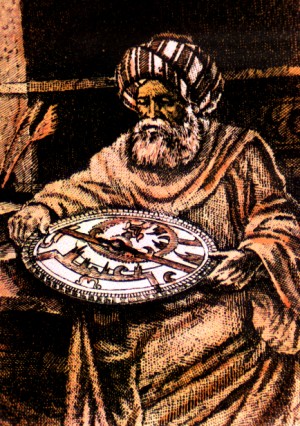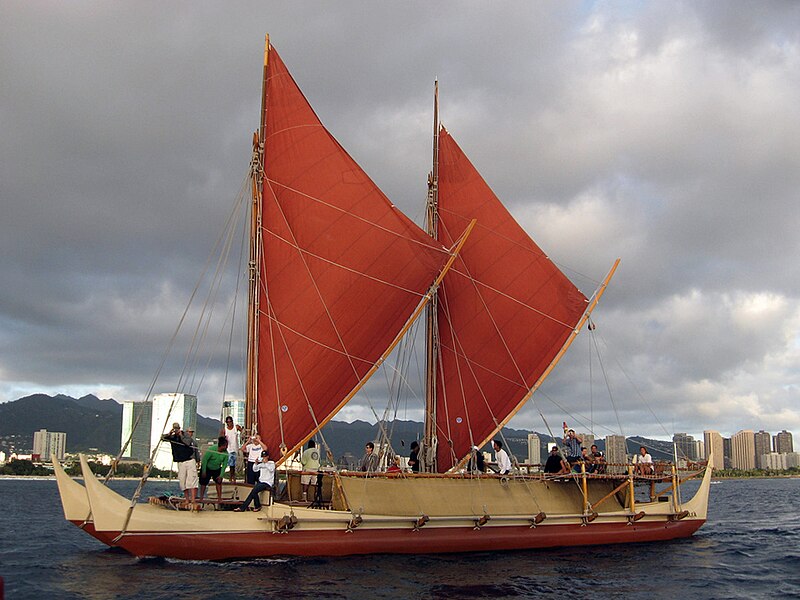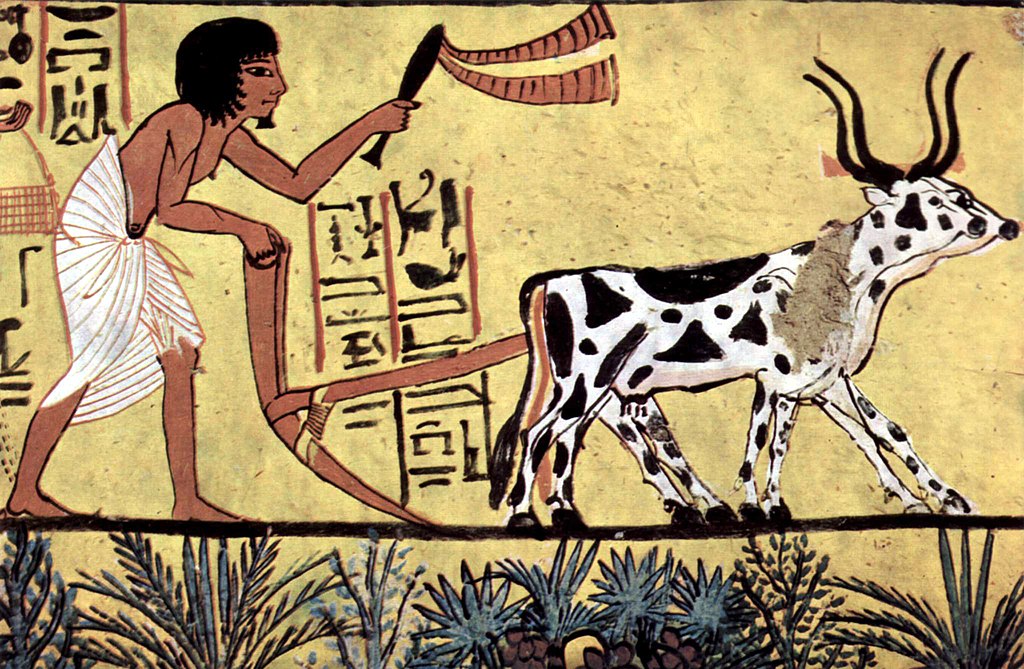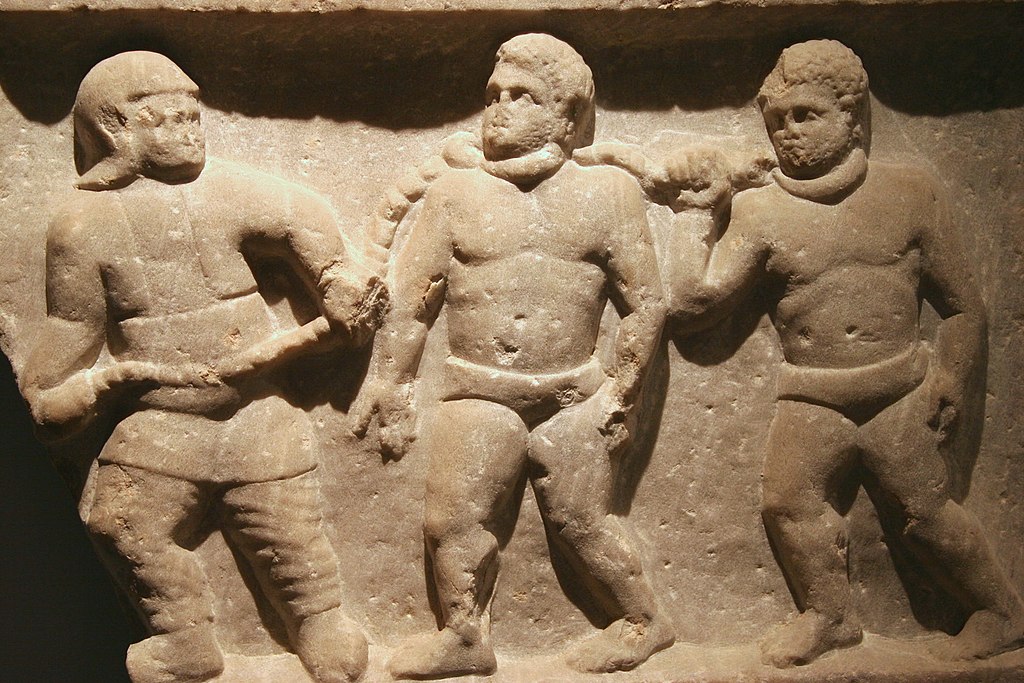
Magic and technology are two sides of the same coin and are inextricably linked. Therefore when building your fantasy world, consider whether to include magic and at what level.
Similarly, think about what level of technology your society is at. Whatever level you choose, magic will influence it. Magic might replace certain technologies. On the other hand, the existence of certain magic might render certain technological advances irrelevant.
What do I mean by level of technology? Is it medieval, classical, bronze age, stone age? What inventions have been made and discoveries found?
Most fantasy stories default to a semi-medieval level of technology with some magic thrown in. Before you use default the default option, think about the implications. What technologies are available? Do you want to take some away to make life more difficult for your characters? How does magic affect the development of other technologies? Above all, because the semi-medieval level is default, it is also cliché.
Magic and Technology
Remember, many of the factors in worldbuilding have to be considered at the same time as others. Magic is one of those. I don’t want to get too deep into designing a magic system. After all, that could fill an entire course higher than 101-level.
More importantly, when deciding on a magic system for your fantasy world, think about how pervasive magic is. You needn’t get into too much detail initially. All things considered, if magic is widespread and common, it would likely replace other technologies. If you have a fireball spell, who needs gunpowder?
On the other hand, some magic might spur other technologies. Like technological development, magic might give a society certain advantages over others. For example, the fireball spell will give a military advantage over those without it. Controlled use of it might advance metallurgy.

One possible scenario is living in a society that has fallen from its peak. It had magic, but lost knowledge of it. Such a society might be stunted in its technological development. Some people would be seeking to retain or relearn certain magic. Others might strive to find technological developments to replace it.
Available Resources
Another factor that determines available technology is what resources are available to the society. We spent some time in Worldbuilding 101 – How to Map Your Fictional World – Landforms thinking about where resources are located in the fantasy world.
For example, if society developed iron weapons, what is the source of the iron? If your fantasy empire is in the center of a broad plain, it’s unlikely they are mining iron. Without an energy source such as wood or coal, they would not likely be smelting ore either. They would have to trade for iron and coal. What do they have to trade? If they’re in the middle of a broad plain, they probably have a surplus of grain. I’ll discuss trade in more detail in a future article about economics.

Bloomery smelting during the Middle Ages.
Perhaps the technology never developed in your society. Bronze and iron smelting didn’t reach the Americas until the arrival of Columbus. Even without widespread metal tools, pre-Columbian societies had complex societies.
On the other hand, one society might benefit from the developments in another. For example, the peoples of the Northwest Coast or America did have access to iron that drifted in from Japan.
Knowledge vs Technology
Another factor in the level of technology is the level of knowledge in the society. The difference between knowledge and technology is like the difference between intelligence and wisdom. Knowledge is information. Technology is turning that information into useful tools. As an example, mathematics is knowledge. Engineers use it to develop technology.
Mathematics developed when people began counting and measuring the natural world. From there, they began to calculate those measurements. Finding patterns in the measurements and calculations allows prediction of other measurements. This was important in developing astronomy, astrology, and calculating time.
In a world that uses technology and magic, mathematics might not develop. If it does, it drives the accumulation of other knowledge. It might even drive the development of magic in the form of numeromancy. In fact, the three magi or “wise men” of the Jesus story were widely believed to be astrologers, which was dependent on mathematics. The word “magi” originally meant a Zoroastrian priest whom the Greeks perceived to be magicians.

Technology Through History
The history of technological development looks linear. The makes intuitive sense. For one advancement, others need to be made first, right?
Technology often unlocks more advanced activities, increases wealth and population, and gives societies advantages over other societies. For example, western Europe had ocean-going ships and gunpowder, giving it an advantage over other societies.
Gunpowder and steel allowed Europeans to subdue pre-Columbian civilizations and enslave Africans. Once disease depopulated the Americas, these technological advancements allowed Europeans to plunder the wealth of the newly conquered continents.

On the other hand, some inventions are made that never lead to other inventions. For example, the Chinese invented gunpowder, but not guns.
In some cases, one society developed a technology well before others did. For example, the crab claw sail drove Austronesian expansion across the Pacific beginning at around 3000 BCE. Lateen sails reached the Mediterranean in the Roman era (Lateen = Latin). The lateen sail developed from the crab claw. This sail type allows sailing into the wind and is necessary for ocean-going ships. Without it, the Europeans would never have conquered the Americas. The Austronesians also developed double-hulled catamarans, which are more stable on the ocean. The Europeans never did.

Metalworking
The main technology driving social change for thousands of years BCE was metal. The great ages of human history and pre-history are named for advancements in metal. The Stone Age, the Bronze Age, and the Iron Age. The Iron Age corresponds to slightly before the classical era of Europe.
Metal is a prime technology because it is needed for weapons. As bronze weapons replaced stone, societies with bronze weapons had a significant advantage. For a swords and sorcery adventure story, technology and magic matter. It makes a difference what the swords are made of.
Neolithic Era
When one says Stone Age, most people think of Paleolithic cave men carrying clubs and wearing fur pelts. In fact, Neolithic societies were far more advanced than widely imagined. They had developed agriculture, pottery, and irrigation. People lived in villages and towns, fought wars, and traded with faraway places. They wore jewelry, woven clothing, and used a variety of tools. Social life was organized with clans, tribes, priests, and warlords. The main difference between this society and the Bronze Age society was the lack of metal.

Bronze Age
The development of smelting led to the development of copper tools. When combined with arsenic or tin, it led to bronze (ca. 3000 BCE). Tin didn’t often naturally occur in the same area as copper. For most societies, trade networks brought the two metals to them.
While metalworking didn’t change the basic aspects of daily life, it did lead to major changes in social structure. The Bronze Age is characterized by the development of cities with hundreds of thousands of people. It is in this era we find the first written records.
Writing allowed people to measure the stars and earth, leading to astronomy and mathematics.
Technological advancement led to a more centralized government, hereditary monarchies, a caste of priests, and written laws. City states became kingdoms and empires.
Iron Age
In constrast, iron is more abundant than copper or tin, but melts at a higher temperature (1535ºC). This means the civilization must have access to wood or coal and a furnace to maintain the heat. The technological advance that made iron possible was the furnace. In order for society to develop this furnace, knowledge of smelting was necessary.

Iron was more common than bronze due to the scarcity of copper and tin. On the other hand, steel is an alloy of iron and other ingredients, mainly carbon. The invention of steel didn’t make a huge difference in the life of the average person. In the default setting of medieval Europe, steel was available, but expensive. Only the fabulously wealthy could afford a full suit of plate steel armor.
China entered the bronze age much later (ca. 1600 BCE). Consequently, they progressed to iron later as well. It wasn’t until China was unified under the Qin dynasty (221 – 206 BCE) that iron technology fully developed.
Later Eras
After the Iron Age came the classical Greek and Roman periods in Europe, both of which advanced in other areas of science. In western Europe, the Roman world degraded to medieval society. The real difference between classical Roman Empire and medieval society are the loss of technology and development of the feudal social structure.
In the Middle East, the Umayyad Caliphate replaced the Roman Empire. Later, technology and learning continued to advance under the Abbasids in Baghdad.
Writing as Technology and a Source of Magic
Writing was a major technological advance. Whether and what kind of writing a society has can determine how knowledge is collected and passed on. Consequently, for a fantasy society, writing is a major consideration in magic and technology.
Do your wizards write down spells? Are they invoked by runes? Is other knowledge and technology recorded or transmitted through writing?

Think about how widespread reading is. If writing requires expensive materials, the poor won’t be able or even have the opportunity to read. Instead, it will be the technology of the rich. In societies where magic can only be written, it would be the domain of rich wizards. On the other hand, where spells can be memorized, the poor will have their own witches and sorcerers.
Widespread writing and books requires cheap materials. The earliest records were recorded on stone, wood, bone, clay, wax, cloth, or metal. The Egyptians used papyrus as far back as 3000 BCE. Parchment replaced papyrus in the 2nd century BCE . The Chinese invented paper in 105 CE, but didn’t reach Europe for another thousand years.
Stone, clay, and, to some extent, metal tablets don’t travel well, so are impractical for mass storage or transmission of knowledge over distances. Parchment, papyrus, and paper work better, but are subject to deterioration over time.

Energy Technology and Magic
Any society requires a power source to drive its economic activity. Before the domestication of cattle in the Neolithic era, agriculture and hunting was done by humans. Later, domesticating cattle and horses to pull plows allowed increased agricultural output and importantly, the surplus needed to feed the animals.

Other civilizations made use of slave labor. This is easy and cheap if the society has:
1. a high population of people available to enslave,
2. the means to subdue others, and
3. agricultural surplus to feed them.

Industrial Development
If there fewer people available to enslave, societies might innovate new sources of energy such as water or wind power. Does your areas have flowing water? If not, is there enough wind to drive mills and pumps? After all, harnessing water and wind requires machines, which implies a level of technology that might not develop if the society relies on slave or animal labor.
Industrial development in western Europe grew when engineers used the steam pump to raise water out of tin mines in Cornwall. The steam engine was cheaper than importing slaves, which is ironic given the slave trade spurred the British exploitation of colonies in North America and the Caribbean.
Magic and Energy
Likewise, think about how magic determines power sources. Does the magical system in your world require an energy source? What is that source? Is it provided by technology? For a more sinister source, perhaps it comes from human sacrifice in the form of slaves.
Do magic users have the knowledge of how the energy is called upon or the technology to create it? If magic is free and easy, why invest in enslaving other people when you can make things magically move?
Finally, when thinking about the society of your story, ask whether slavery exists. If it does, it doesn’t preclude other technological advances. On the other hand, there would be less incentive to develop other energy sources and other technologies. In addition, think about whether your society domesticated horses or oxen. After all, it’s hard to think of a fantasy story without riding horses, though it’s certainly possible.
Other Technologies
There are many technologies that might or might not be present in a fantasy world. The clichéd default option of medieval Europe gets boring. As a thought experiment, try removing some technology and think about what happens to society if that technology doesn’t exist. Will someone use magic to invent a replacement?
Here are some topics and some of the technologies to think about in each category.
Navigation: Compass? Astrolabe?
Measuring time: Mechanical clocks? Sundials?
Literature: Writing? Paper? Printing? Movable type?
Agriculture: Irrigation? Windmills? Plough? Wheel? Pottery?
Architecture: Building with stone? Brick?
There are probably more topics under technology, but for every one you think of, think about why it would develop. What need does it meet? Are the resources and knowledge available for it to develop? Can magic meet the need? In order to answer these questions, you need to have a good understanding of your society’s level of technology and magic.

